

Plant Profiles
Viburnums
Viburnum spp.
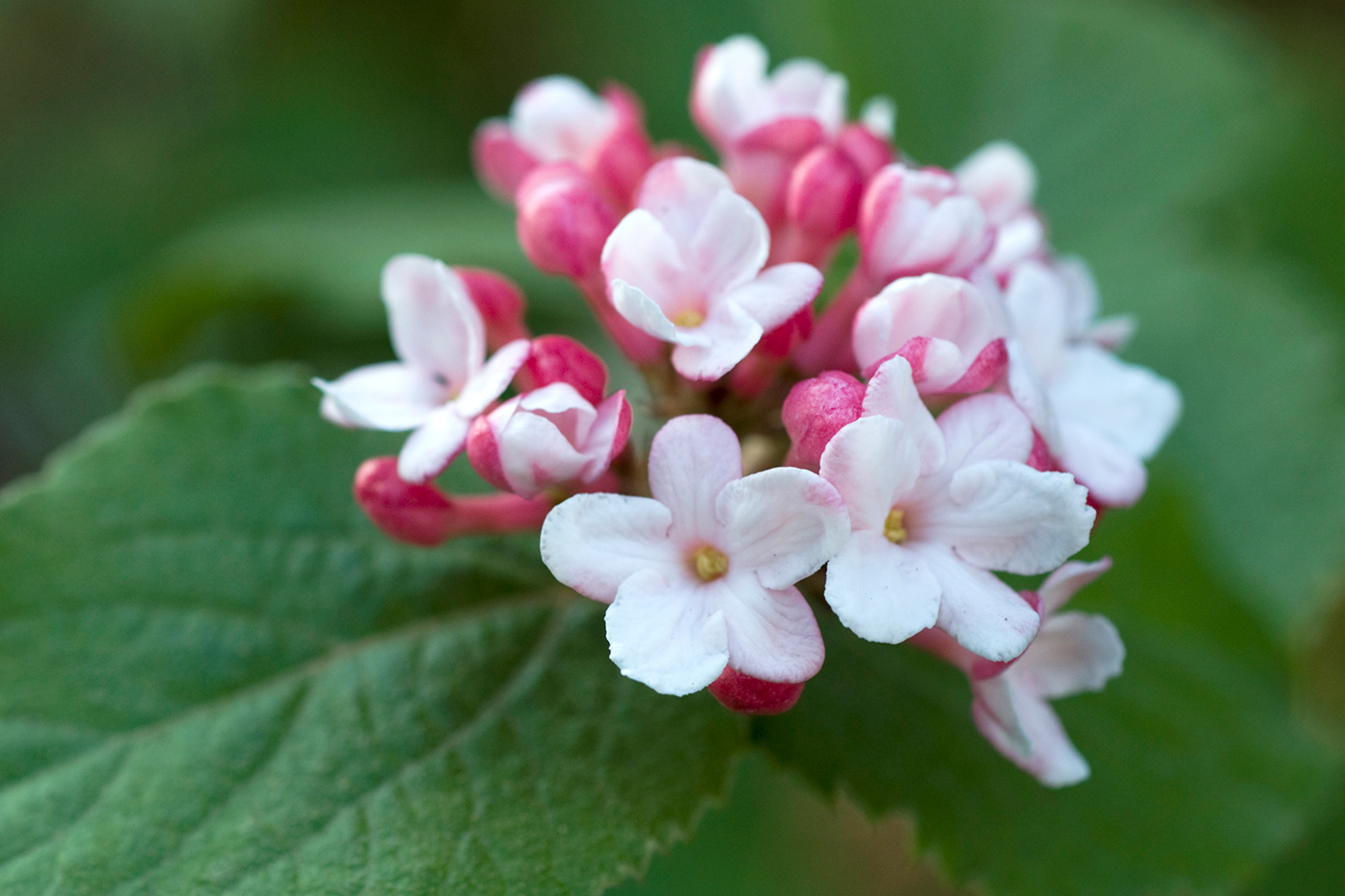
Korean spice viburnum (Viburnum carlesii 'J. N. Select') shows off pale pink-white blooms in early spring.
Korean spice viburnum
(Viburnum carlesii )
The distinctive scent of Korean spice viburnum can stop you in your tracks during an early May stroll: sweet, rich, and complex with a hint of cloves. You may encounter it in the Sensory Garden, in the English Walled Garden, or in other garden byways.
Wise gardeners plant this shrub near a path or doorway to enjoy the full effect during the two weeks or so when its small white flowers, opening from pink buds, are most fragrant. Korean spice viburnum (Viburnum carlesii) also offers an attractive wine-red fall foliage on a compact, spreading 4- to 5-foot-high shrub.
It's just one of the hardy, adaptable viburnums, a group of easy-care shrubs that bring bloom, fruit, and fall color to many a midwestern backyard. Many of them have fruit that attracts birds and may persist most of the winter.
Viburnums tend to prefer slightly acid soil, but a number of species easily handle the alkaline conditions of many Chicago-area yards. They have few pest or disease problems and need little pruning, if they are properly chosen and planted in the right place. As with all shrubs, it's far easier in the long run to select a species or variety that you will have room for when it has grown up than to try to control a too-big plant with constant pruning.

Synnestvedt arrowwood viburnum – Chicago Lustre™ (Viburnum dentatum 'Synnestvedt') reveals shiny blue berries in autumn.
Arrowwood
(Viburnum dentatum)
Most viburnums do best in full sun, but arrowwood (Viburnum dentatum) can tolerate part shade. As its common name suggests, the straight stems of this upright American native were once used to make arrows. The broad white flower clusters that come in June are fragrance-challenged, but they mature into blue-black berries that birds love.
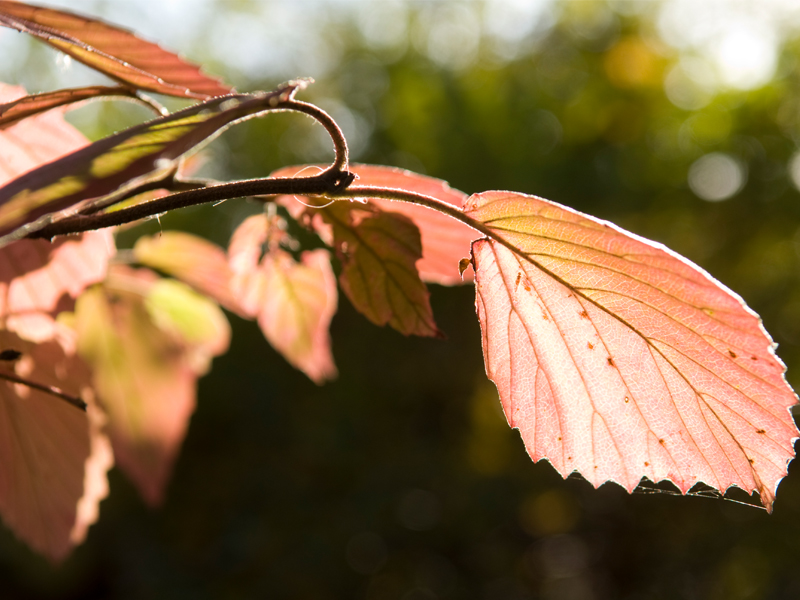
Morton arrowwood viburnum – Northern Burgundy™ (Viburnum dentatum 'Morton') displays magnificent fall color.
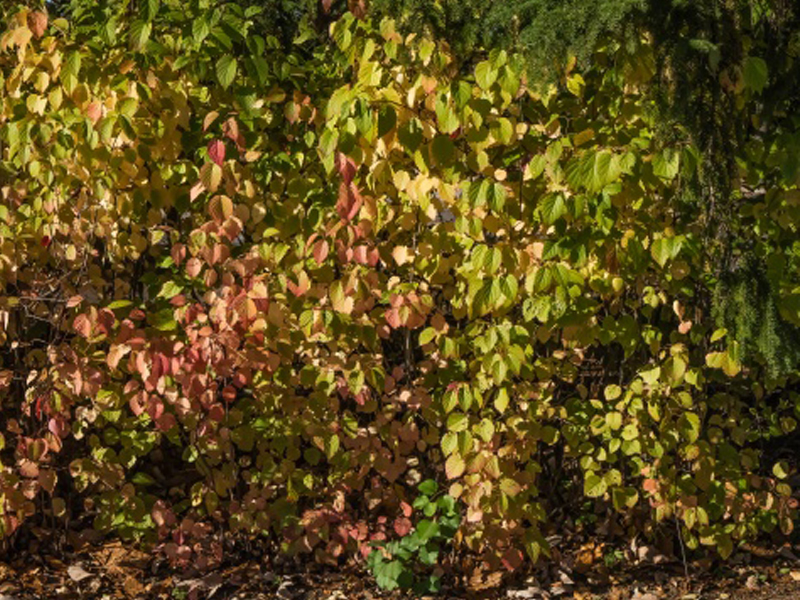
Northern Burgundy
(Viburnum dentatum 'Morton'),
Autumn Jazz
(Viburnum dentatum 'Ralph Senior')
The glossy, sharp-toothed leaves often turn deep red in autumn, depending on the weather. Northern Burgundy (Viburnum dentatum 'Morton') and Autumn Jazz (Viburnum dentatum 'Ralph Senior') are selections from the Chicagoland Grows program chosen for more reliable fall color, among other good qualities. Arrowwood is a big shrub, often reaching 10 feet high and wide, so give it lots of room.
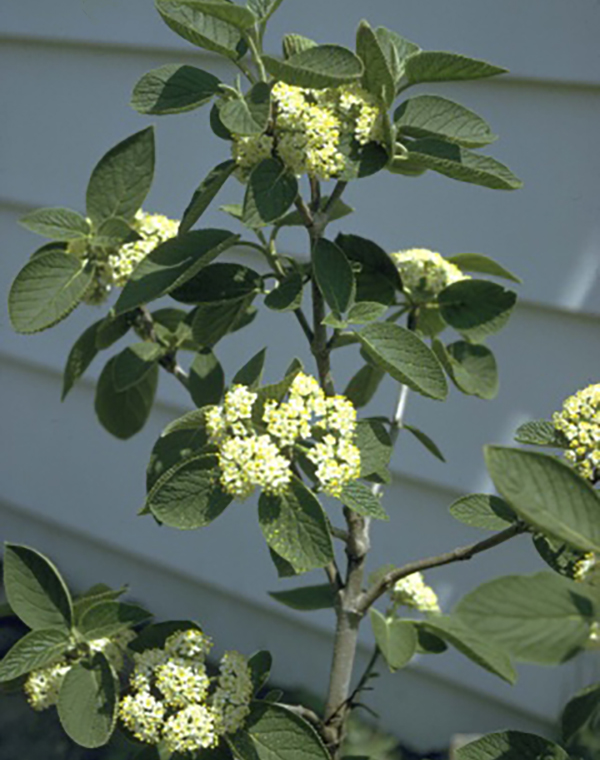
Wayfaring tree
(Viburnum lantana)
Another substantial viburnum is the especially adaptable wayfaring tree (Viburnum lantana), which grows well in alkaline soils and tolerates drought. Despite the common name, it usually grows as a rounded, multistemmed shrub that can be 10 to 15 feet high and wide. It has 5-inch-wide flower clusters that, alas, have scant scent. But they become berries that ripen, often in a multicolored display, from yellow to red to black. The rough-surfaced leaves are bluish-green until they turn gold to red in autumn. 'Mohican' is a somewhat smaller cultivar — it tops out at about 10 feet — with berries that are bright red for a month before ripening to black.
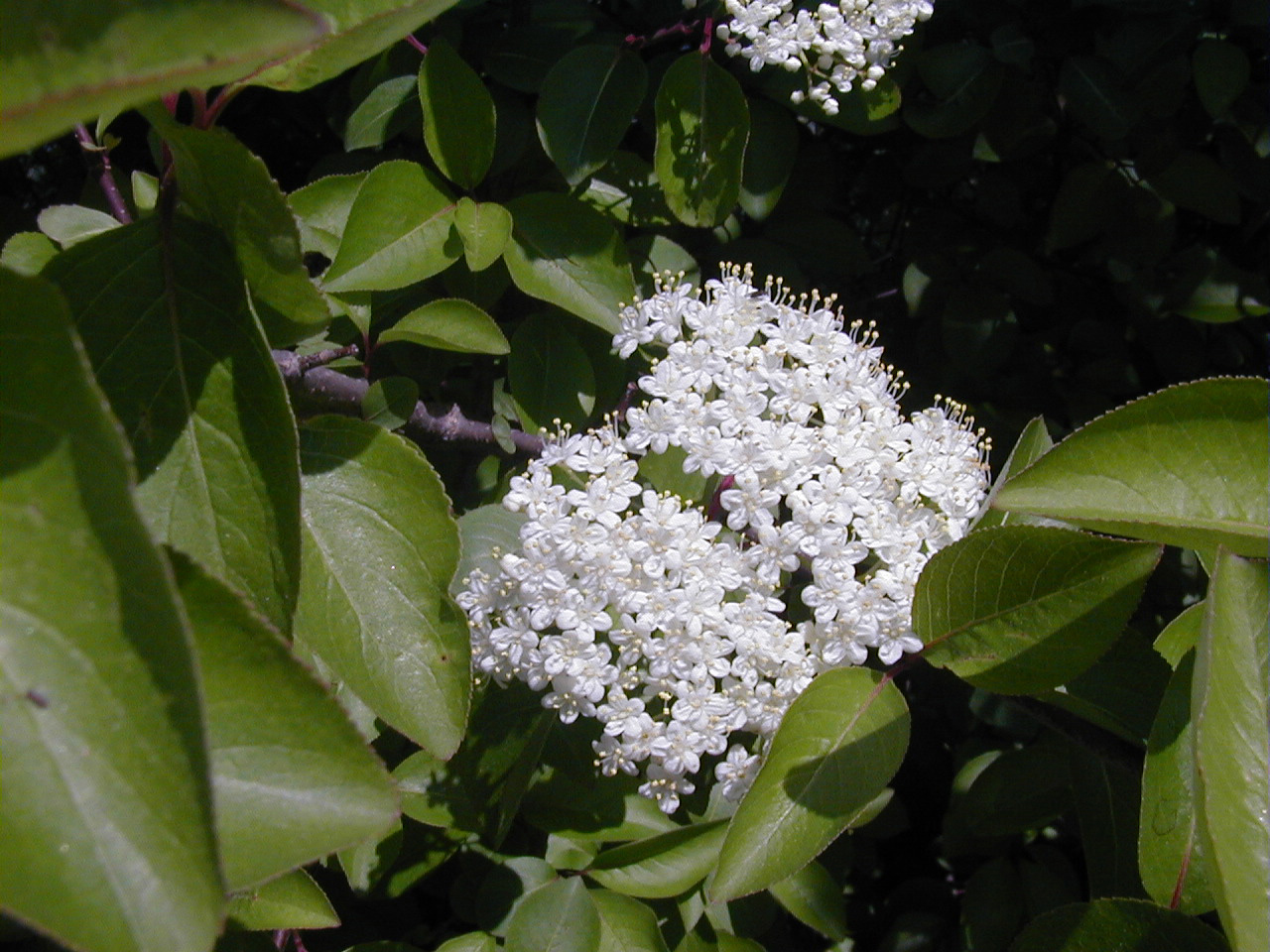
Blackhaw
(Viburnum prunifolium)
If you want a downright tree, one that can reach 30 feet in a couple of decades, the native blackhaw (Viburnum prunifolium) can be trained that way. It has creamy flower clusters in May and pink fruit, eventually ripening to black, that is edible by humans as well as birds.
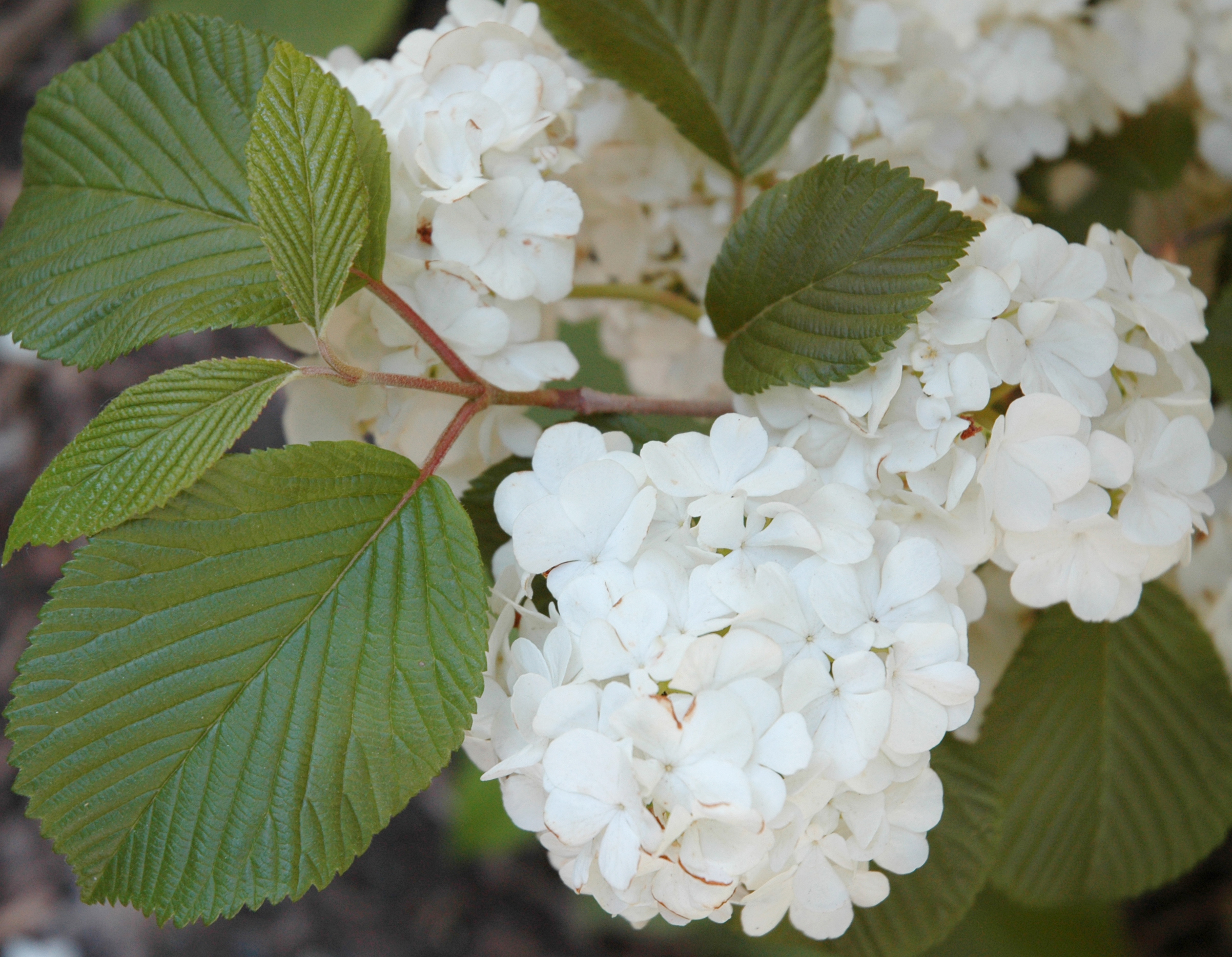
Doublefile viburnum
(Viburnum plicatum f. tomentosum)
The most elegant of these shrubs is doublefile viburnum (Viburnum plicatum f. tomentosum), with stately horizontal branches on a 10-foot-tall shrub. 'Mariesii' is the cultivar most known for its layers of broad, flat, white flower clusters, though it bears little fruit. The crinkled leaves are bright green in spring, deeper green in summer and usually burgundy in autumn.
Doublefile viburnum is not quite as hardy as some other viburnums, but in a sheltered spot it often does quite well. Plant it as a specimen with plenty of room to show off its fine form.
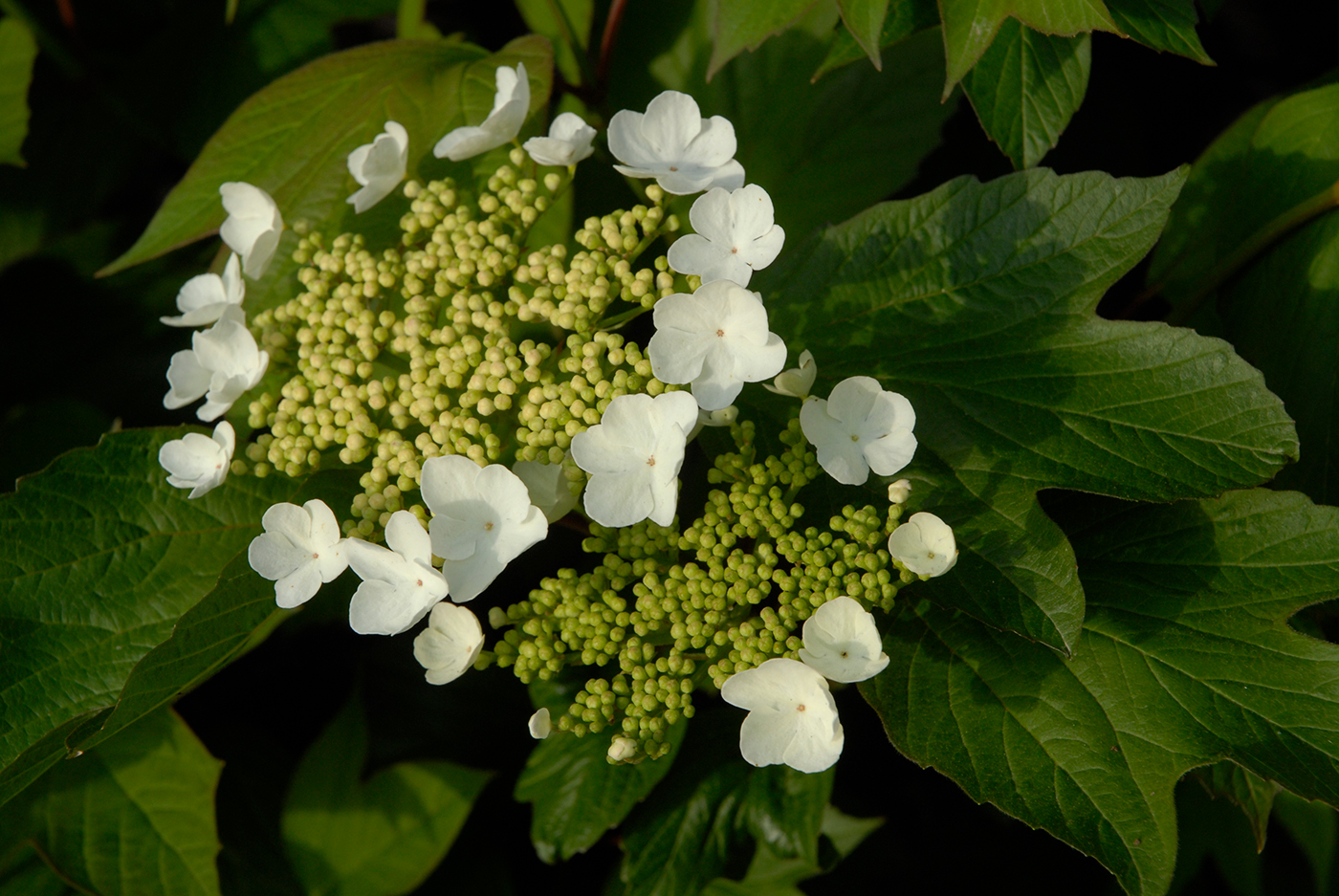
American cranberrybush viburnum (Viburnum trilobum) has distinctive trilobed leaves.
American cranberrybush viburnum
(Viburnum trilobum)
A lovely native species is American cranberrybush viburnum (Viburnum trilobum). Shiny red fruits follow the white flowers if they are pollinated from another plant, and broad leaves, almost maple-shaped, turn bright red in autumn. Redwing (Viburnum trilobum 'J. N. Select') is a cultivar with a relatively dense form, growing up to 10 feet tall and 8 feet wide.
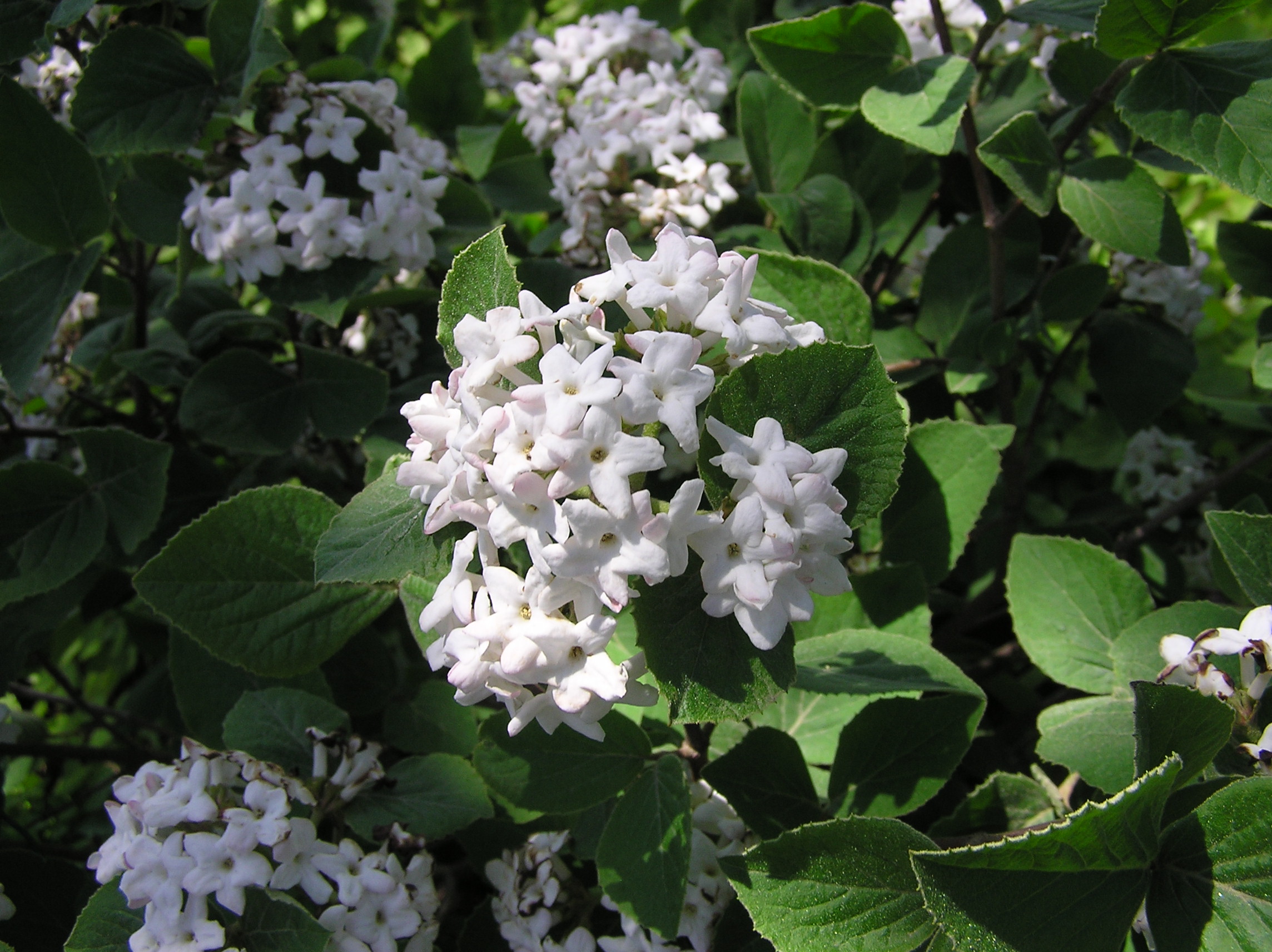
Judd hybrid viburnum
(Viburnum x juddii )
What if you don't have that kind of space? The Judd hybrid viburnum (Viburnum x juddii ) is a bit smaller, growing only 6 to 8 feet tall, with a rounded form. Its delicate pink-white flowers' fragrance reveals that Korean spice viburnum is one of its parents. The leathery dark-green foliage often turns red in autumn.
Beth Botts is a garden writer and speaker who lives and gardens in Oak Park, Illinois.

